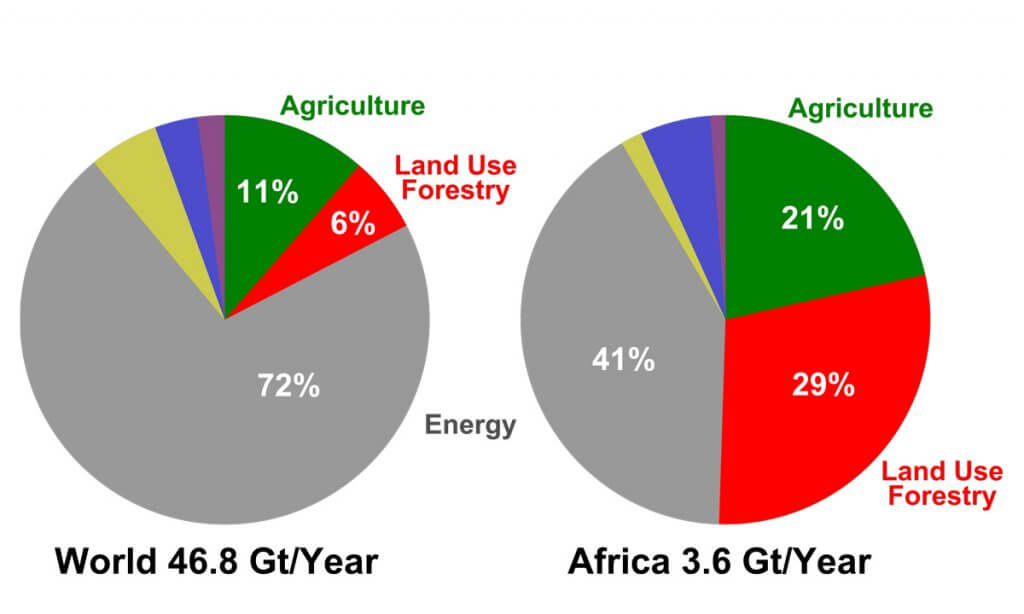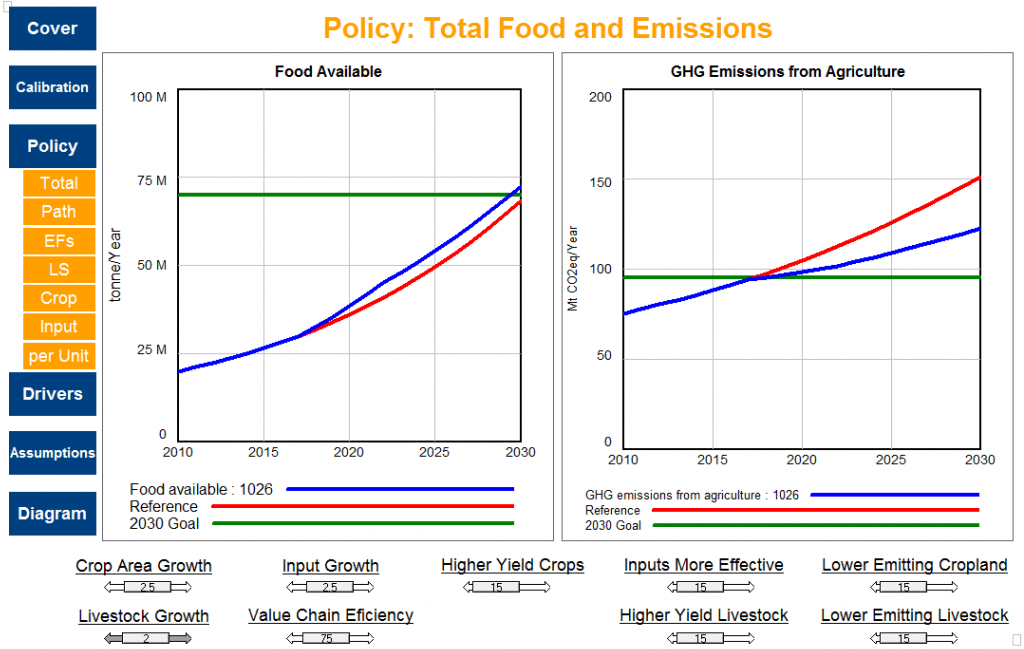National food system modeling, to make sense of national policy priorities.
A quick note:
Our latest research on food and agriculture systems have been
incorporated into the En-ROADS and C-ROADS Climate Simulators. The Agriculture and Land Policy Simulator (ALPS) is no longer being updated and does not reflect the latest research and analysis on
food systems.
Climate Interactive developed the Agriculture and Land Policy Simulator (ALPS) to allow users to see the interactions of different policy decisions on a nation’s food system. As a national-scale model, country ministries and civil society groups can think about different development pathways to see if those policies could create their desired future.
ALPS frames the importance of agriculture in the ‘Nationally Determined Contributions’ (NDCs) that countries pledged for the 2015 Paris Agreement on climate change (UNFCCC, COP21). As part of that global climate change agreement, countries declared their goals for reducing greenhouse gas emissions. With ALPS, countries can create an interactive tool to explore their pledges to see what it would take to achieve their goal and how different policies affect the timing of reach food production and emissions targets.
ALPS brings together various data sources, starting with global datasets (e.g., FAO) and then integrating national data when available. Currently the model can examine:
- Livestock production
- Water use
- Forestry
- Greenhouse gas emissions
- Soil carbon
- Crop production
- Land-use and land-use change
- Food losses and waste
- Demographic changes (population and GDP)
In Africa, we partnered with Mohammed VI Polytechnic University (UM6P) to answer the question, “How can smart decisions about agricultural development in Africa contribute to climate change mitigation and adaptation?” Our goal is to help understand how agriculture decisions and policies can improve agriculture in Africa, in light of the two competing trends of climate change and population growth. What decisions can be made to:
- improve agricultural production,
- mitigate greenhouse gas emissions from agriculture, and
- improve farmer resilience and food security to climatic shocks?
African emissions compared to global emissions

Many countries include actions in their agriculture sector. For African countries, agriculture is a particularly important economic sector — agriculture is often a large proportion of their GDP and also a large source of greenhouse gas emissions. While these proportions vary by country, approximately 50% of Africa’s greenhouse gas emissions come from agriculture, compared to 17% globally.

Sign Up for Updates
If you’re interested in using ALPS, currently the best way to try it out is to check out Agritopia, the role-play exercise using ALPS. You can also sign up for updates by contacting us. We look forward to hearing from you.
Click to read the latest updates to our Food Systems project.
